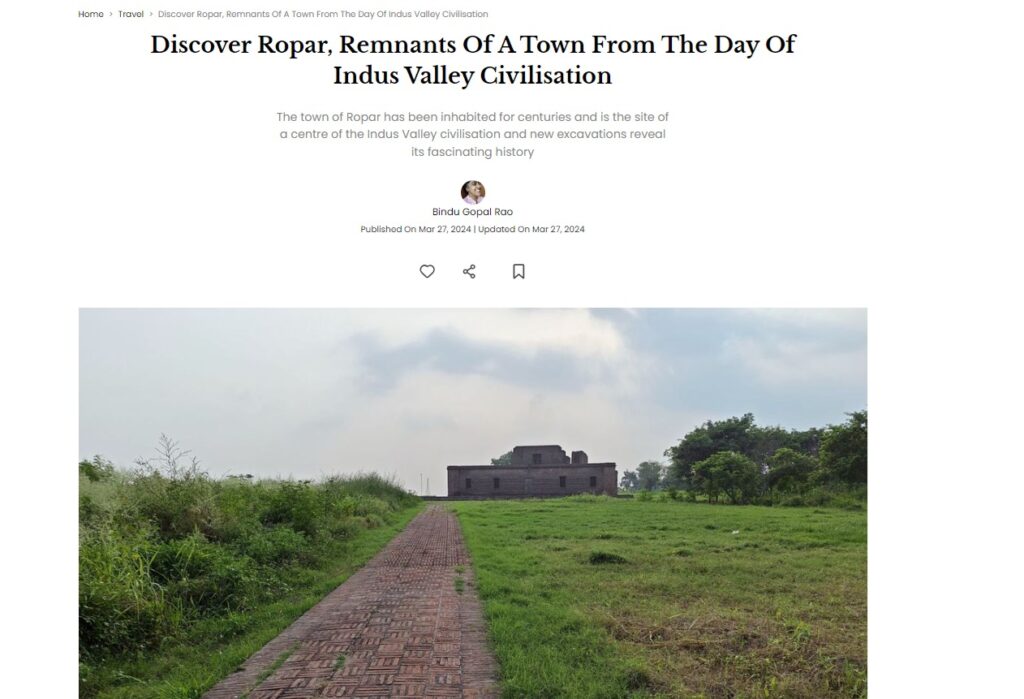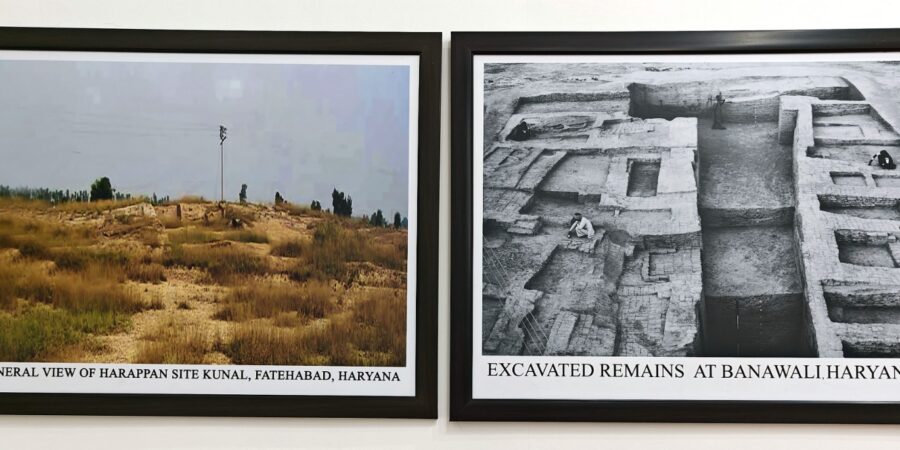On a recent visit to Chandigarh as part of the first travel summit, Rangla Punjab, I had a chance to visit Ropar and see an ancient Indus valley civilisation site.
The relics from Ropar indicate that it should have been a commercial town, as it lay the crossroads where the routes coming from the Himalayas, the south direction, and the valleys of the Indus and the Ganga converged. Lying at the bend where the Sutlaj (ancient satadru or Satudri) takes a sudden westward turn, the site is identified with the town of Ailadhana mentioned in the Valmiki’s Ramayana. It is believed that The King Bharata, brother of Lord Rama, crossed the river, enroute from Rajpur in the Shivaliks to Ayodhya. Rupnagar is also associated with the folklore of Rupa and Vasanta. It was here the Guru Gobind Singh crossed the river in December 1704, to fight the battle of Chamkaur sahib. Maharaja Ranjit Singh and Lord William Bentinck, the British Governor General met each other in October 1831.
The other finds include a variety of items of the Harappan affinity. The Harappan ware were accompanied by those of the Bara tradition, so named after the type site which is not for from here. Significantly, the lower level revealed some pottery elements which are akin to those of the pre-Harappan Kel of Kalibangan (Rajasthan), Banawali (Haryana) and Kot Diji (Pakistan).
With the fall of the Mauryans rule, India again parcelled out into smaller states. Some of them were republic which came up in the eastern Punjab and Haryana. It received in its material culture influences from the Indo-Greek, Scythian, Parthian and Sunga tradition. Then followed the age of the Kushana paramountcy. Subsequently it once again came under the republican system until the Guptas became all powerful.
The archaeological material in forms of pottery, terracotta’s, coins, seals and other knick-knocks of all the above cultures are found in the assemblage of this period at Ropar. Amongst the finds, a coin mould of Apolodotus-II, a gold coin of Chandragupta-kumaradevi type and a hoard of 660 coins, mainly of the Kushanas and tribal Kushanas are important. Perhaps, the Hunas were responsible for destruction of the town.
Read the full story that first appeared in Zee Zest here:

